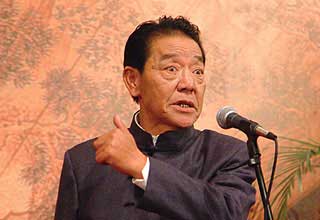
Pingshu (Popular Tales) is a quyi art form of oral storytelling and it includes its namesake that's popular in northern China and pinghua in eastern China's
Yangzhou. It developed into an independent art form in the early years of the
Qing Dynasty(late 17th century). Though pingshu is performed orally, artists in the early period mainly hopped from the trade of changqu (melody singing), which shows the two forms' close link.
The pingshu performer wore a gown and sat behind a table, with a folded fan and a gavel (serving as a prop to strike the table as a warning to the audience to be quiet or as a means of attracting attention in order to strengthen the effect of the performance, especially at the beginning or during intervals). By the mid l920s, these props had all disappeared, with the performer appearing only in a standing position in a gown or any other kind of clothes.
The storytellers often added their own commentaries on the subjects and the characters. They also explained the origins of and material objects in the stories. So the audience, while watching their performances, was not only entertained, but also educated and enlightened.
Pingshu performers talk in Putonghua (standard Chinese, based on the
Beijingdialect). This is the popular practice in North and most of Northeast China.
The art of storytelling, with its broad mass appeal, resulted in the growth of other art forms, nurturing talented artists. Famous novels such as The Romance of the Three Kingdoms and serialized novels all emerged under the influence of the storytelling artists. Many great writers, in consequence, continued from there to tread the path of literature. It can be thus considered that the art of storytelling represented by pingshu or pinghua is one of the genres imbued with special Chinese characteristics and the richest colors of Chinese aesthetics.
